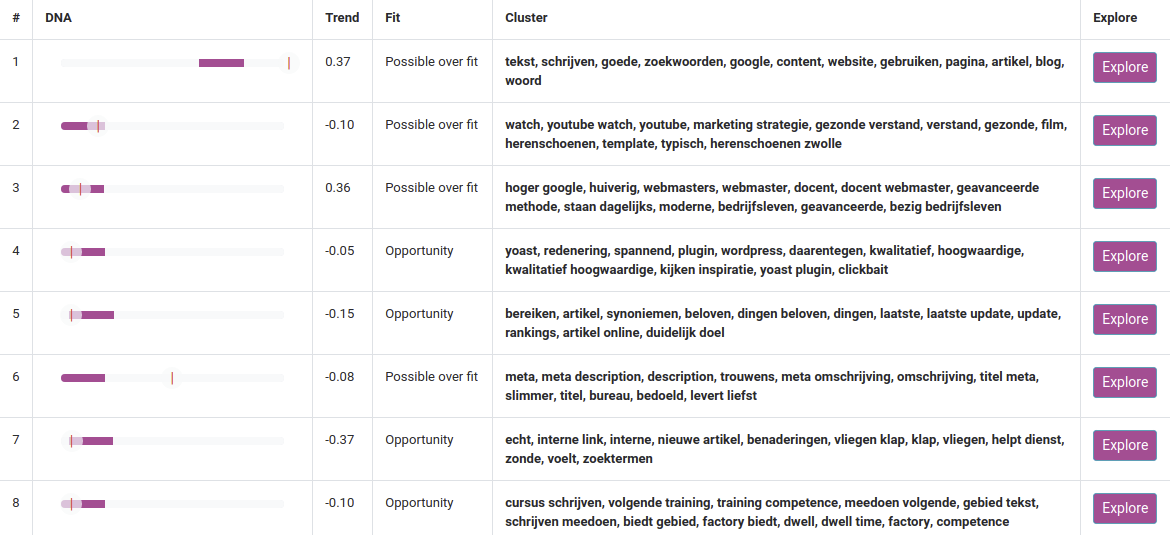Content intelligence core feature: AAutomatic content research
It is as if an expert is assisting you to you write your article.
Content intelligence is the MarketingTracer AI that helps with the writing of an article with the aim of getting as high as possible in Google.
We do this by first reading, analyzing and breaking the entire top 100 of Google into sub-topics. Then we look at how much is written about each sub-topic and whether pages that have written more or less about a sub-topic get higher or lower in the Google results.
The MarketingTracer AI has learned what to look out for by reading millions of clusters. So the recommendations are getting better and more accurate. You notice that, because Content Intelligence ensures a higher position in the Google results.
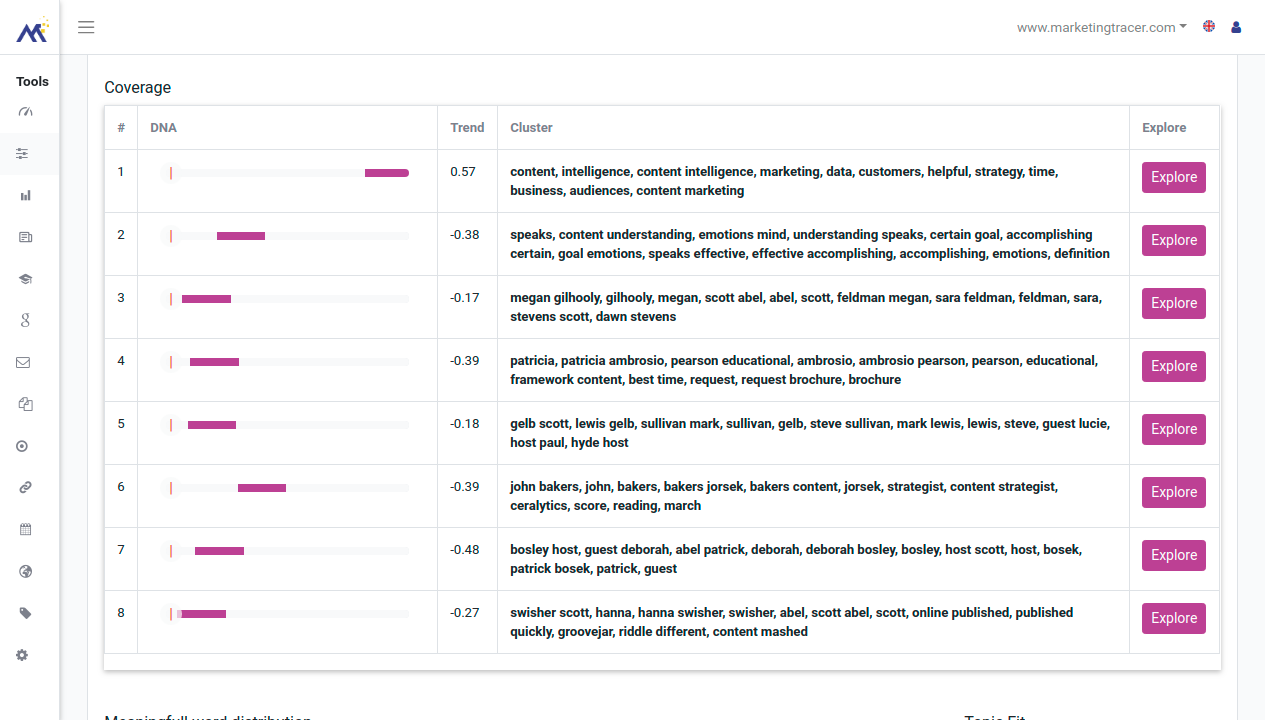
Content intelligence core feature: Context relevant recommendations
As soon as you write or change your text, we will adapt. We look at whether the context has changed and whether this leads to a higher position.
Content shoudl be written for humans. Google knows that and is looking for high-quality content that fits well with what people want and read.
Therefore, the MarketingTracer Content Intelligence is the only tool that looks at the context of the words and phrases you write. Because the context ensures that a story takes on meaning.
How do we do that? Content intelligence doesn't start with words, no content intelligence starts with context. That is our starting point and from there we look at the quality of your texts. This way we always give our recommendations in the right context.
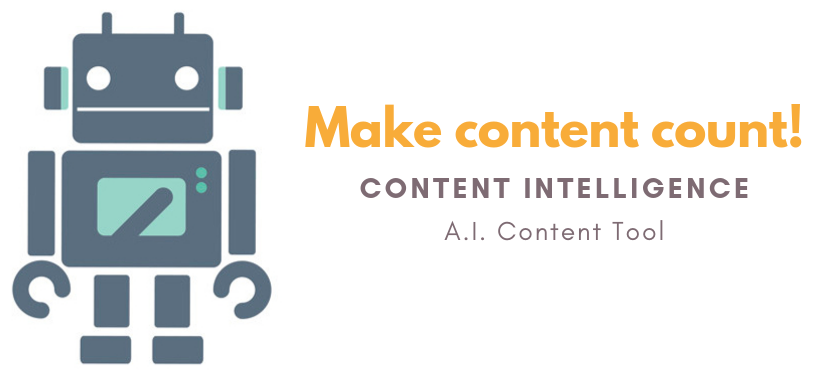
Content intelligence core feature: Deep language understanding
Google is no longer fooled by 'SEO texts' in which words should occur so often. We understand text and search for the context.
To give good advice about texts you need to have a good understanding of language. Google knows that and we know that too.
That is why we use the Google NLP toolkit BERT and the Google AI framework Tensorflow. Together, this is an unbeatable combination that provides a robust foundation for truly understanding language
From there, content intelligence starts working. We look at which underlying clusters now really influence a higher position. We compare that with your texts and give you recommendations and even complete example sentences about what you are missing or overexposed in your articles.
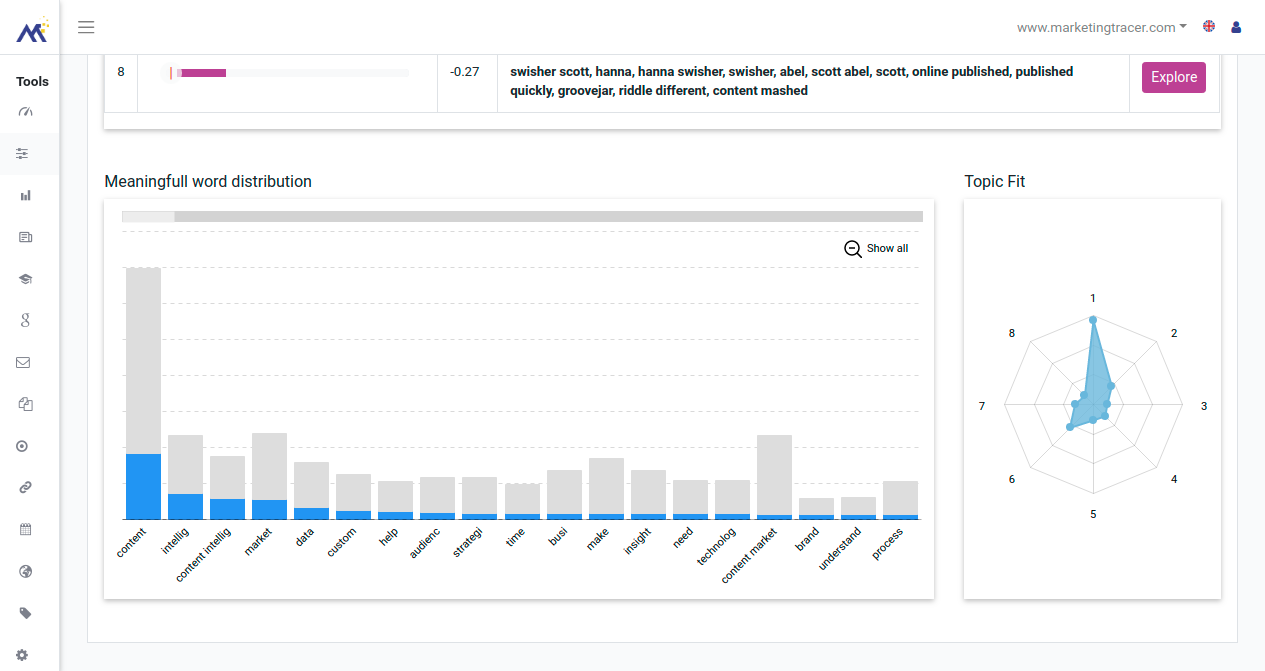
1. Get started in 2 small steps
Once the AI model has been created you can get started with content intelligence. First you view our content survey. Make sure you understand the relationships we have found and then write or improve your article.
#1 - Examining content
Once we have identiefied the perfect content for you, you can get started. Click on 'explore' to investigate a content cluster. We show you found content that is extremely representative of a cluster. This way you can see at a glance what you can write about this. Don't just take over the content, someone has worked hard for it and you can also expect a nice duplicate content penalty when you do that. No, use your content explorer to get ideas and disk content that is even better than your colleague's.
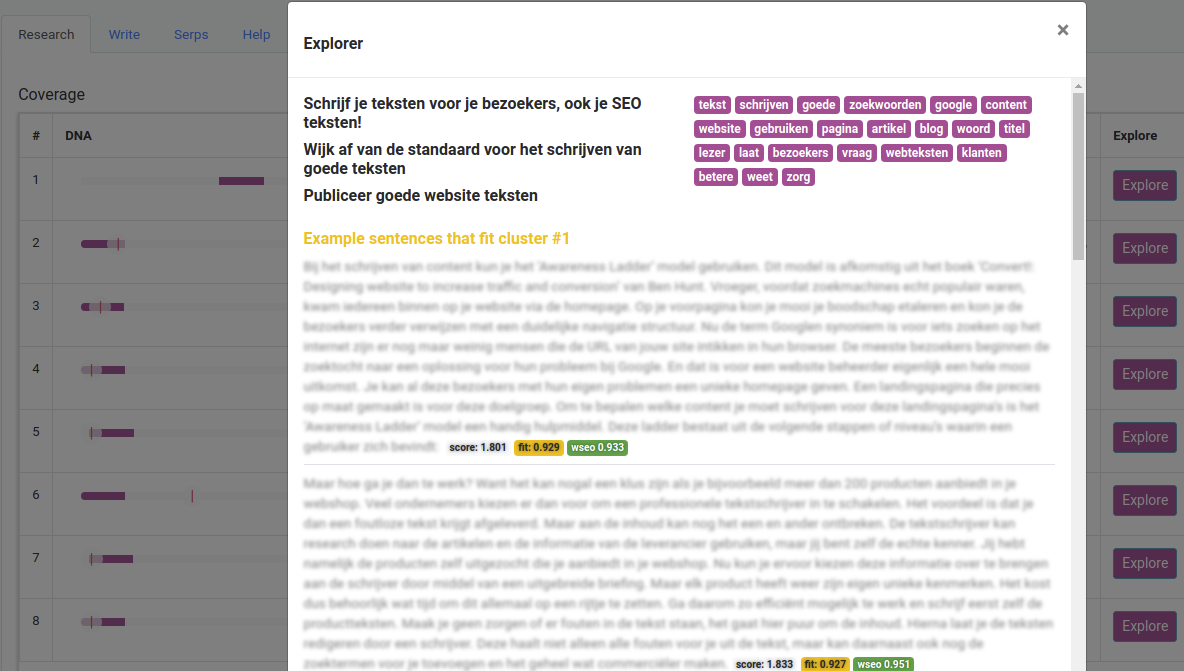
#1 - Writing and publishing
Write your new content now. As soon as you start writing, the content score is regularly updated. We assess your content through a Content Score. This content score looks at how much you deviate your content from the 'perfect' content.
We often see that experts are too fit for purely substantive sub-topics. They are too focused on transferring technical content. Content marketers on the other hand are too busy with writing popular content and are sometimes not sufficiently concerned with the content.
Our content intelligence indicates exactly which content gets too much and which content gets too little attention.
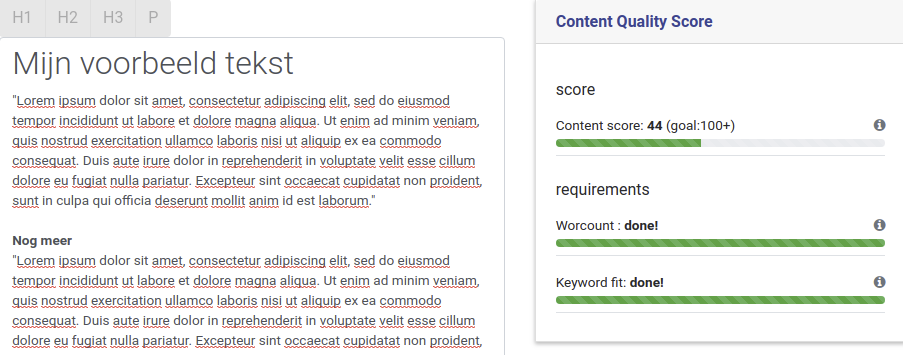
2. What is the MarktingTracer Content Intelligence AI?

Content Intelligence is an advanced deep learning system. The AI examines the search results and detects important trends that we may not be able to easily discover ourselves.
Content is not a collection of words. It is a story in which sub-topics have relationships with each other and together tell the entire story about a topic. Artificial intelligence systems are extremely well suited at finding these relationships.
The AI content tool first conducts extensive keyword and content research and searches for the 'perfect content'. That is, how is the topic structured and which small sub-topics contribute to what extent to the total content of the page.
While writing or editing an article, we will tell you which sub-topics require more or less attention, how you can present the content and present new topic ideas.
3. Content intelligence in 3 small steps
Content Intelligence consists of 3 steps. The first step is content research by our AI tool. The second stel is to create a topic model of the research found. We then use that topic model to explain Google search results.
#1 - AI Content research
Writing an article always starts with thorough research. Our Artificial Intelligence understands language exactly as people do. We understand that words in sentences do not always have the same meaning. We understand that words and sentences must be seen in context. Only as soon as we know exactly what can be found about a topic can we proceed to the next step::
#2 - A.I. Topic Modelling
After we have investigated the content of the topic, we look for sub-topics within this topic. For example, do we write an article about 'forests'? Then we find, for example, the sub-designs (clusters). Walking, Fauna, Bosbeheer etc. At the same time we look at which content is most suitable and representative for a sub-topic.
#3 - Topic representation
Now that we know what is being written and how it fits together, we look for the 'perfect content'. Search engines have their own 'topic model' and 'topic representation' of the 'world'. In this step we find out how a search engine sees the world and which content is important for a search engine.
